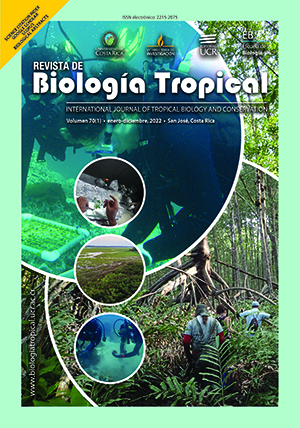Resumen
Introduction: The Andes are characterized by having great water richness, which is why their currents are frequently regulated by reservoirs for the generation of energy in Colombia. Such regulation could generate changes in aquatic macroinvertebrate (AM) communities; however, little has been studied in this regard in Colombian rivers, which is a hotspot of global diversity. Objective: Herein, the effect of regulation on the environmental variability and diversity of AM in three regulated Andean rivers (reservoirs) was evaluated, based on the hypothesis that regulated currents present less diversity than non-regulated ones. Methods: Samples of physicochemical variables and AM were taken before and after the regulation of the Tafetanes, Calderas, and La Arenosa rivers, in Antioquia-Colombia, during various hydrological cycles (rain, transition and drought) and climatic phenomena (ENSO/El Niño Phenomenon) between 2016 and 2018. Results: 53,214 individuals, from 165 taxa, were collected; mostly from the orders Ephemeroptera, Plecoptera, Trichoptera (EPT), and Diptera. Changes in diversity responded to spatial differences rather than to physicochemical variables, being diversity greater in non-regulated sites, regardless of the hydrological period or associated ENSO. Although the majority of the species were found in all the sampling sites, their abundance was greater in the one with the best habitat conservation status. Conclusion: The results support the hypothesis that physical barriers have little effect on EPT richness at local scales and that the condition of adjacent habitats may play a greater role in the conservation of these organisms.
##plugins.facebook.comentarios##

Esta obra está bajo una licencia internacional Creative Commons Atribución 4.0.
Derechos de autor 2022 Revista de Biología Tropical







